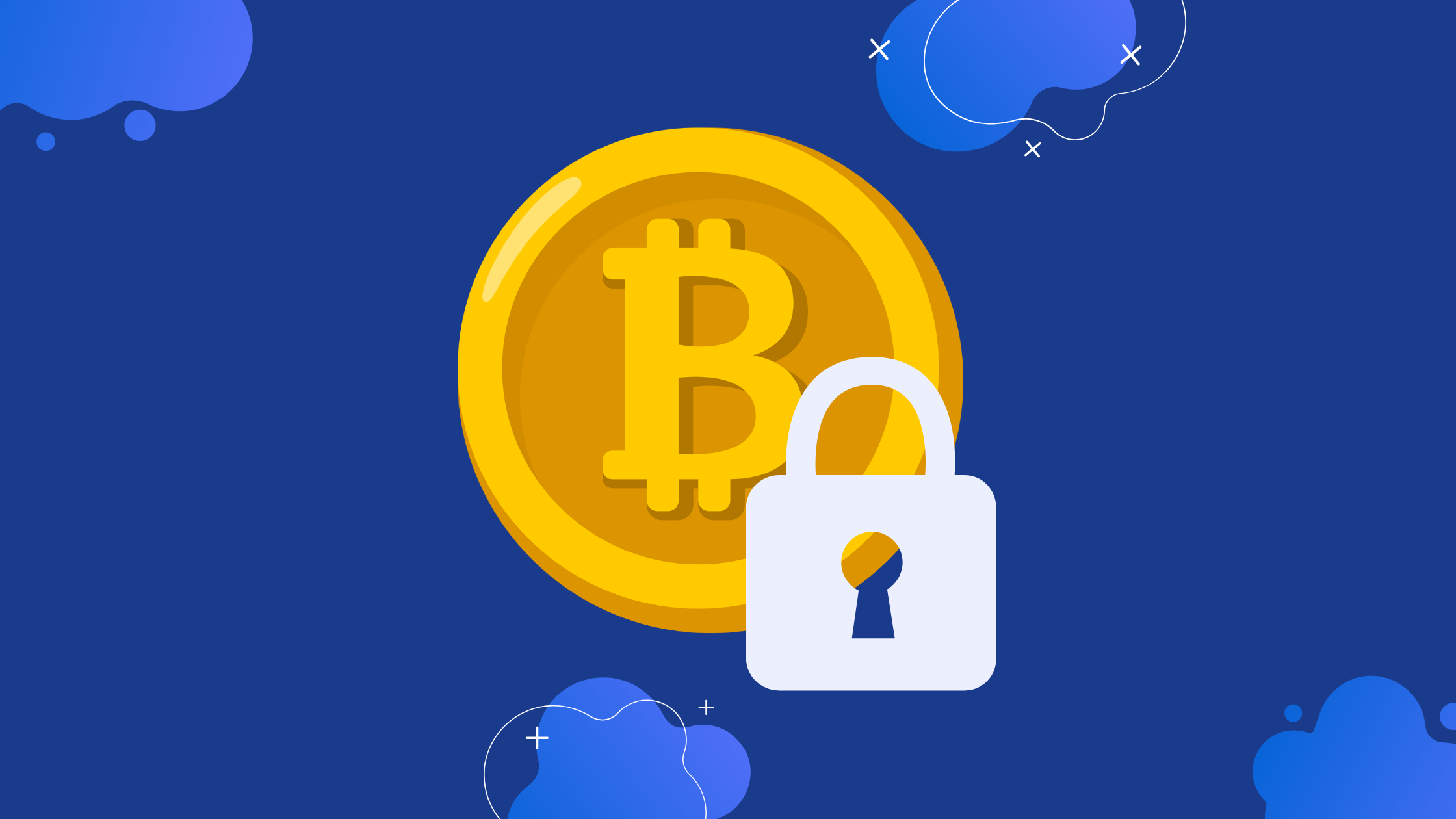
The dynamic realm of cryptocurrencies has ushered in a new era of financial innovation, presenting an array of opportunities and challenges. As digital assets continue to gain prominence, the imperative of safeguarding one’s crypto holdings has never been more pronounced. This article embarks on an exploratory journey into the multifaceted domain of cryptocurrency security, delving deep into the intricacies of fortifying one’s digital wealth.
In a landscape characterized by decentralized ledger technology, cryptographic keys, and blockchain networks, the preservation of asset integrity assumes paramount significance. The fervent interest surrounding cryptocurrencies, coupled with their inherent value, has attracted not only astute investors but also malicious actors seeking to exploit vulnerabilities.
As the appeal of cryptocurrencies transcends traditional financial paradigms, the need to understand and implement comprehensive security measures becomes a non-negotiable aspect of participation. This discourse aims to equip readers with the knowledge and tools required to navigate the treacherous waters of crypto security effectively.
From the foundations of cryptographic key management to the selection of secure wallets, from vigilance against phishing attempts to the intricacies of backup and recovery procedures, each facet of cryptocurrency security warrants meticulous attention. Through this exploration, readers will gain insights into the best practices, technologies, and strategies that fortify their position in the ever-evolving and occasionally perilous landscape of cryptocurrencies.
This journey is not merely an academic exercise but a practical guide to empower individuals, investors, and enthusiasts alike to protect their crypto assets from nefarious actors and unforeseen contingencies. It underscores the indisputable fact that, in the realm of cryptocurrencies, security is not an option; it is an absolute necessity.
Join us as we embark on a voyage through the corridors of cryptocurrency security, where knowledge becomes armor, and vigilance becomes the shield in the pursuit of financial sovereignty.
The Importance of Working with a Professional Accountant
Security Fundamentals

In the ever-evolving landscape of cryptocurrencies, comprehending the bedrock principles of security is indispensable, particularly when it comes to protecting your digital assets within a Binance Coin (BNB) wallet. Delving into these security fundamentals not only enhances one’s understanding of cryptographic ecosystems but also fortifies the defenses against potential threats:
- Private and Public Key Dynamics: At the core of cryptocurrency security lies the duality of private and public keys. Private keys are the secret cryptographic strings that grant ownership and control of digital assets, while public keys serve as addresses for receiving funds. The stringent safeguarding of private keys is non-negotiable, as they represent the linchpin to your BNB wallet’s security.
- Cryptography and Digital Signatures: Cryptography, the science of secure communication, underpins cryptocurrency transactions. Digital signatures, derived from private keys, authenticate transactions and validate their integrity. Understanding how cryptographic algorithms function is pivotal in grasping the inviolability of blockchain security.
- Wallet Security Paradigms: Wallets, be they hardware, software, or paper-based, play a pivotal role in cryptocurrency security. Hardware wallets, like the Ledger Nano S or Trezor, provide enhanced physical security, while software wallets, such as mobile or desktop options, offer convenience. The choice of wallet should align with your security preferences and risk tolerance.
- Multi-Factor Authentication (MFA): Implementing MFA adds an extra layer of security to your BNB wallet. By requiring multiple forms of verification, like a password and a one-time code, it becomes significantly more challenging for malicious actors to gain unauthorized access.
- Backup and Recovery Protocols: The importance of robust backup and recovery mechanisms cannot be overstated. Safeguarding recovery phrases, typically comprising 12 to 24 words, is vital in restoring wallet access in case of loss or theft. These phrases should be stored securely offline, away from prying eyes.
- Regular Software Updates: Wallet software is not immune to vulnerabilities. Regularly updating your BNB wallet’s software ensures that security patches and enhancements are applied promptly, mitigating potential exploits.
- Phishing Awareness: Phishing attacks are prevalent in the cryptocurrency sphere. Being vigilant against deceptive emails, websites, and communications impersonating legitimate entities is pivotal. Always verify the authenticity of sources before divulging sensitive information.
- Cold Storage Strategies: For long-term asset preservation, consider employing cold storage solutions like hardware wallets or paper wallets. These keep private keys entirely offline, rendering them impervious to online threats.
- Secure Network Connections: When accessing your BNB wallet online, ensure secure and trusted network connections. Using Virtual Private Networks (VPNs) and avoiding public Wi-Fi networks can thwart data interception attempts.
- Continuous Education: The cryptocurrency landscape is dynamic, and staying abreast of emerging threats and evolving security measures is paramount. Ongoing education and engagement with the crypto community foster a proactive approach to security.
In assimilating these security fundamentals, users can establish a resilient bulwark around their Binance Coin (BNB) wallet, mitigating risks and fostering confidence in their cryptocurrency journey. It is imperative to acknowledge that security is a continuous process, and an unwavering commitment to safeguarding digital assets is the cornerstone of successful cryptocurrency management.
Choosing a Wallet

The process of selecting an appropriate cryptocurrency wallet is a pivotal decision, steeped in considerations of security, accessibility, and functionality. In the context of safeguarding your digital assets effectively, the choice of wallet plays a pivotal role. To make an informed decision in this realm, it is imperative to contemplate the following key factors:
- Type of Wallet: The cryptocurrency ecosystem offers various wallet types, each catering to distinct user preferences. Consider the following options:
- Hardware Wallets: Physical devices designed for offline storage, offering heightened security.
- Software Wallets: Installed on desktops, mobile devices, or web browsers, providing convenience and accessibility.
- Paper Wallets: A paper printout containing QR codes and keys for offline storage.
- Online Wallets: Web-based wallets accessible from any device with an internet connection, emphasizing convenience but potentially at the cost of security.
- Supported Cryptocurrencies: Determine the wallet’s compatibility with the specific cryptocurrencies you intend to manage. Not all wallets support all digital assets, so it is crucial to ensure compatibility with your portfolio.
- Security Features: Security is paramount in the realm of cryptocurrencies. Evaluate the wallet’s security features, including:
- Encryption: Robust encryption protocols to protect your private keys.
- Multi-factor Authentication (MFA): The option to enable MFA for added security layers.
- Biometric Authentication: Fingerprint or facial recognition for mobile wallets.
- Hardware Security Modules (HSMs): Hardware-based security to safeguard keys.
- User-Friendliness: Consider your level of technical proficiency. Opt for a wallet with a user interface and user experience that aligns with your comfort level. A complex interface may lead to user errors.
- Backup and Recovery: Assess the wallet’s backup and recovery mechanisms. The ability to retrieve your wallet and assets in the event of loss or theft is of utmost importance. Securely store recovery phrases or seed words.
- Development Team and Reputation: Research the wallet’s development team and their track record. Trustworthy, transparent, and actively engaged teams are essential for ongoing support and security updates.
- Open Source: Open-source wallets allow for community scrutiny, fostering transparency and trust. Ensure the wallet’s codebase is open for public review.
- Mobile or Desktop: Choose a wallet type that aligns with your device preferences. Some wallets offer both mobile and desktop versions for versatility.
- Hardware Wallet Brand: If opting for a hardware wallet, explore reputable brands known for their security features, firmware updates, and overall reliability.
- Transaction Fees: Understand the wallet’s fee structure for transactions. Some wallets offer customizable fee settings, while others have fixed structures.
- Community Support and Resources: An active user community and readily available resources can be invaluable for troubleshooting and staying updated on wallet features and security measures.
- Privacy Features: Evaluate the wallet’s privacy-enhancing features, especially if anonymity is a priority. Some wallets cater specifically to privacy-focused cryptocurrencies.
By meticulously weighing these factors and aligning your preferences with your specific cryptocurrency goals, you can confidently select the cryptocurrency wallet that complements your digital asset management strategy while prioritizing security and ease of use.
Safeguarding Private Keys

In the context of cryptocurrency security, the protection of private keys emerges as a pivotal facet, representing the cornerstone of asset safeguarding. Private keys, which serve as cryptographic credentials, grant access and control over digital holdings. To fortify the sanctity of private keys, it is imperative to institute stringent security protocols and practices, including:
- Cold Storage Solutions: Employ offline storage methodologies, such as hardware wallets, paper wallets, or air-gapped systems, to isolate private keys from online exposure, mitigating potential threats.
- Secure Physical Storage: For hardware wallets and paper-based keys, ensure secure and fireproof storage mechanisms, such as safes or safety deposit boxes, to protect against theft, loss, or damage.
- Strong Passphrases: Utilize robust, unique passphrases for private key generation or importation. Craft these passphrases to resist easy prediction, incorporating a blend of uppercase and lowercase characters, digits, and special symbols.
- Multi-Signature Wallets: Embrace multi-signature wallet configurations, which mandate multiple private keys for transaction authorization. This strategy erects an additional security barrier against single points of compromise.
- Offline Transactions: Execute transactions offline, employing devices disconnected from the internet to sign and authorize actions, thus minimizing exposure to online risks.
- Secure Digital Copies: When retaining digital backups of private keys, subject them to robust encryption schemes and ensure their storage in secure, offline mediums, such as encrypted USB drives within a secure vault.
- Recovery Phrases: Safeguard recovery phrases, typically comprising 12 to 24 words, offline and secure, for potential key recovery purposes. Disclose these phrases to no one and maintain their confidentiality.
- BIP38 Encryption: For paper wallets, consider implementing BIP38 encryption, mandating a passphrase for private key access, thereby enhancing protection.
- Phishing Vigilance: Exercise extreme caution against phishing attempts and fraudulent schemes. Never input private keys or recovery phrases on suspicious websites or in response to unsolicited requests.
- Regular Audits: Conduct periodic audits of wallet integrity to verify the unaltered state of private keys and rule out compromise.
- Secure Environment: When engaging with private keys on internet-connected devices, operate within trusted, secure environments, abstaining from public Wi-Fi networks, and reinforcing security through firewalls and protective software.
- Access Control: Limit knowledge of private keys to individuals necessitating access, diminishing the risk of insider threats.
The conscientious adoption of these stringent security measures ensures the fortification of private keys, assuring the safeguarding of digital wealth in the unpredictable and often perilous realm of cryptocurrencies. The significance of private key security remains paramount in the pursuit of financial autonomy and security within this digital landscape.
Backup and Recovery

In the intricate ecosystem of cryptocurrency management, the establishment of robust backup and recovery procedures is nothing short of imperative. These protocols serve as the ultimate safety net, providing a lifeline in the event of unexpected contingencies, ranging from device failures to accidental loss or theft of private keys. To ensure the continuity and integrity of your digital assets, it is essential to adhere to the following key principles and best practices:
- Comprehensive Backup Strategy: Develop a well-defined backup strategy that encompasses all pertinent components, including private keys, recovery phrases, wallet configuration files, and transaction history.
- Frequency of Backups: Execute regular backups to capture any recent changes or transactions. The frequency should align with your level of cryptocurrency activity.
- Secure Storage Medium: Utilize secure and offline storage mediums for backup copies, such as encrypted USB drives, hardware wallets, or paper printouts. Ensure these backups are not exposed to potential online threats.
- Encryption: Encrypt backup files and recovery phrases with robust encryption algorithms to fortify their security in the event of unauthorized access.
- Geographic Redundancy: Implement geographic redundancy by storing backups in multiple, physically distinct locations. This mitigates the risk of data loss due to localized disasters.
- Recovery Phrases: Safeguard recovery phrases diligently, as they are the linchpin for restoring access to your wallet and digital assets. Store them offline and separate from the wallet.
- Test Restoration: Periodically test the restoration process using your backup files or recovery phrases to ensure their functionality. This practice minimizes surprises during an actual recovery scenario.
- Documentation: Maintain detailed documentation of your backup and recovery procedures, including the location of backup copies, encryption keys, and any necessary software or tools.
- Emergency Response Plan: Develop an emergency response plan outlining the steps to be taken in the event of wallet loss or compromise. Assign responsibilities and ensure all involved parties are aware of the procedure.
- Wallet-specific Guidelines: Familiarize yourself with the wallet-specific backup and recovery guidelines provided by your wallet provider. Different wallets may have unique procedures.
- Professional Assistance: In complex or high-stakes scenarios, consider seeking professional assistance from experts experienced in cryptocurrency recovery.
- Security Verification: Prior to initiating a recovery process, verify the security of the environment and devices being used. Ensure that they are free from malware and potential threats.
- Data Redundancy: Implement data redundancy through multiple backup copies. This minimizes the risk of data loss due to corruption or unforeseen issues.
- Version Control: Maintain version control for wallet software and ensure that you have access to the specific version required for recovery, as software updates can affect compatibility.
By steadfastly adhering to these backup and recovery best practices, cryptocurrency users can fortify their resilience against unforeseen disruptions, thereby ensuring the protection and accessibility of their digital assets in the dynamic and occasionally unpredictable world of cryptocurrencies. Backup and recovery procedures constitute the bedrock of financial sovereignty and security within this digital frontier.
In the intricate tapestry of cryptocurrency management, the journey through the realms of security, wallet selection, private key safeguarding, and backup and recovery culminates in a profound appreciation for the importance of diligence, knowledge, and foresight in safeguarding one’s digital wealth.
As the cryptocurrency landscape continues to evolve and mature, the imperative of comprehensive security measures becomes more pronounced than ever. This discourse has unveiled the multifaceted strategies and practices that underscore the essence of cryptocurrency security, ensuring the fortification of assets against an array of potential threats.
The mastery of security fundamentals, including the meticulous management of private keys, lies at the heart of this paradigm. In comprehending the nuances of cryptographic authentication and digital signatures, users are empowered to navigate the labyrinthine terrain of blockchain networks with a heightened sense of confidence.
The process of selecting an apt cryptocurrency wallet, be it hardware, software, or paper-based, emerges as a pivotal decision, intrinsically tied to the user’s risk tolerance and security preferences. A judicious selection, influenced by an array of factors, assures that the chosen wallet aligns harmoniously with the user’s specific cryptocurrency goals.
Safeguarding private keys, the quintessential keys to the digital kingdom, is a non-negotiable facet of asset protection. The adoption of stringent security protocols, including cold storage, encryption, and multi-signature arrangements, creates an impregnable fortress against potential adversaries.
Backup and recovery procedures, often underestimated, represent the ultimate contingency plan, promising a lifeline in times of crisis. The implementation of thorough backup strategies, geographic redundancy, and the diligent preservation of recovery phrases constitute the bedrock of resilience in the face of unforeseen contingencies.
Conclusion

In conclusion, the journey through cryptocurrency security embodies a continuous commitment to vigilance, education, and adaptation. It is a realm where knowledge becomes armor, and vigilance becomes the shield. The pursuit of financial autonomy within this digital frontier is one that necessitates not just financial acumen but also a profound understanding of the security paradigms that underscore it.
As the cryptocurrency landscape continues to unfurl, this discourse stands as a testament to the ever-evolving nature of the field and the steadfast dedication required to traverse its intricacies. It is our hope that readers emerge from this exploration with a heightened appreciation for the importance of security and a fortified resolve to protect and preserve their digital wealth in the dynamic world of cryptocurrencies.













